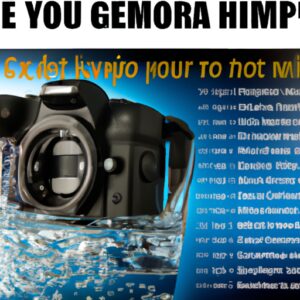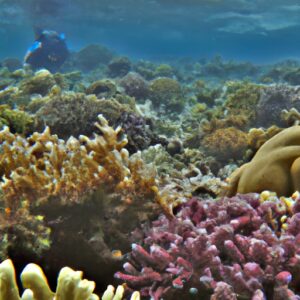
A Guide to Underwater Photography Techniques
Are you ready to take your photography skills underwater? Shooting photos in the water is an exciting and rewarding experience. But it requires a bit of preparation and knowledge about underwater photography techniques.
As a generation jones individual who has been diving for years, I’ve picked up some tips and tricks for capturing amazing underwater shots. And I’m here to share them with you.
Choose the Right Equipment
Before you dive into the water with your camera, it’s important to make sure you have the right equipment. Your camera needs to be waterproof or housed in a waterproof case. It should also have a good auto focus system, shooting modes, and image stabilization.
Another important piece of equipment is the underwater strobe or flash. This will help you to capture brightly lit, sharp photos in the often-dark environment of the water.
Master the Lighting
Speaking of lighting, it’s important to understand how light behaves in the water. Water absorbs and scatters light, which can make your shots look blurry or washed out. One way to combat this is by using the manual white balance setting on your camera.
Another technique is to position your strobe or flash at an angle to the subject, rather than directly in front of it. This helps to create more depth and shadows in your photos.
Get Close to Your Subjects
In underwater photography, it’s often said that “closer is better.” This means that the closer you can get to your subject, the better the photo will be. This is because water is a natural magnifier, and the closer you are, the clearer and more vibrant the subject will appear in your shot.
But getting close doesn’t mean you should disturb the subject or damage the environment. Always prioritize the safety and preservation of the underwater world.
Be Patient and Persistent
Underwater photography requires a lot of patience and persistence. It can often take multiple dives to get the perfect shot, and even then, it’s not guaranteed. But the rewards of capturing a stunning underwater photo are well worth the effort.
So, take your time, experiment with different techniques, and don’t be afraid to try new things. With practice and perseverance, you’ll soon be capturing beautiful underwater shots like a pro.
Conclusion
Underwater photography can be an incredible and rewarding hobby. By choosing the right equipment, mastering the lighting, getting close to your subjects, and being patient and persistent, you’ll be on your way to capturing breathtaking underwater shots. So, dive in and start exploring the fascinating world beneath the surface!







